Posts Tagged: booklice
Take a Bug Break--and Bring Along This Book
Don't take a coffee break. Take a bug break. Step into your garden, walk over to a community park, or hike in the wilderness and see what's out there. And take along the newly published, newly revised "The Field Guide to California Insects." It...
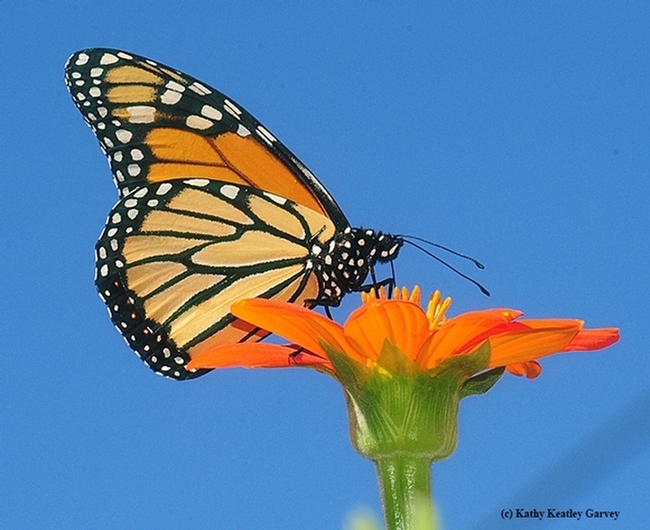
A monarch butterfly, Danaus plexippus, nectaring on a Mexican sunflower, Tithonia rotundifola. (Photo by Kathy Keatley Garvey)
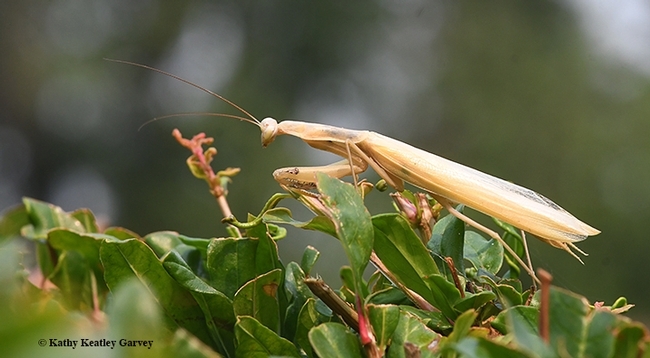
A praying mantis, Mantis religiosa, looking for prey. (Photo by Kathy Keatley Garvey)
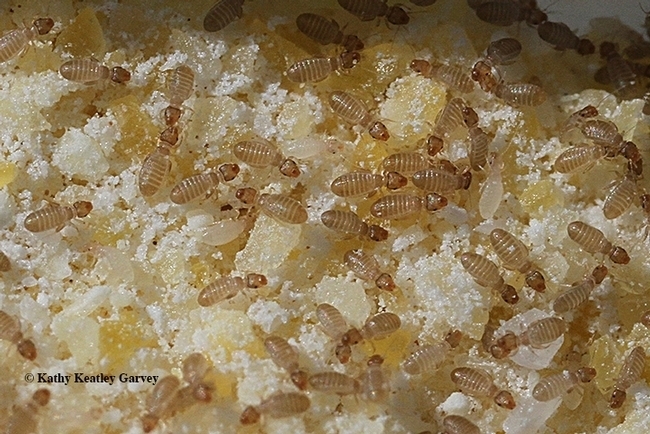
Booklice, Liposcelis bostrychophila, are nearly microscopic (about a millimeter long). You may find them in your cornmeal. (Photo by Kathy Keatley Garvey)
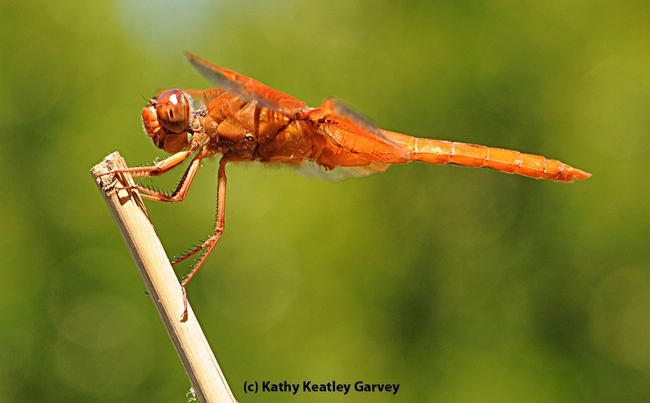
A flameskimmer dragonfly, Libellula saturata, perches on a stake. (Photo by Kathy Keatley Garvey)
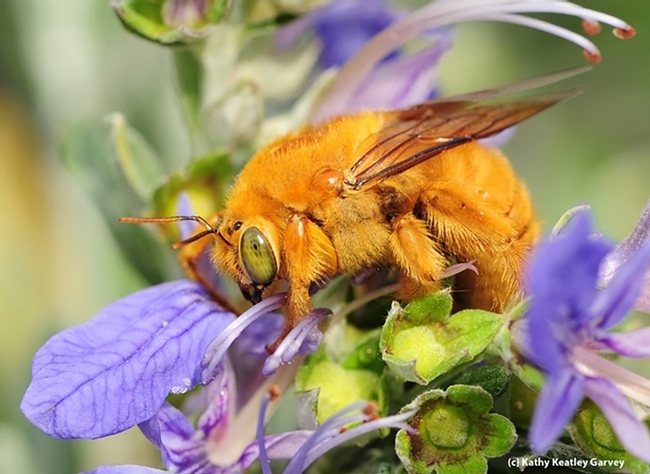
This is the male Valley carpenter bee, Xylocopa sonorina (formerly known as Xylocopa varipuncta). (Photo by Kathy Keatley Garvey)
Bohart Museum Open House: Focusing on Urban Entomology
Mark your calendars! The next open house at the Bohart Museum of Entomology, located in Room 1124 of the Academic Surge Building on Crocker Lane, UC Davis campus, is set for 1 to 4 p.m., Sunday, Nov. 18. It's free and family friendly. "The focus is...
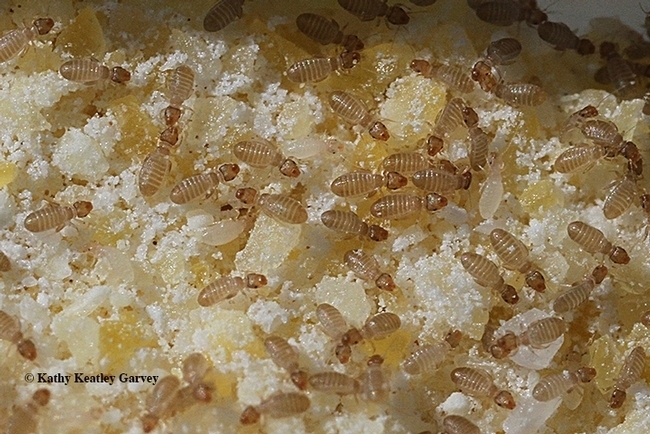
Booklice are nearly microscopic insects, Liposcelis bostrychophila, or "psocids" (pronounced "so kids"). They are common pests in stored grains. (Photo by Kathy Keatley Garvey)
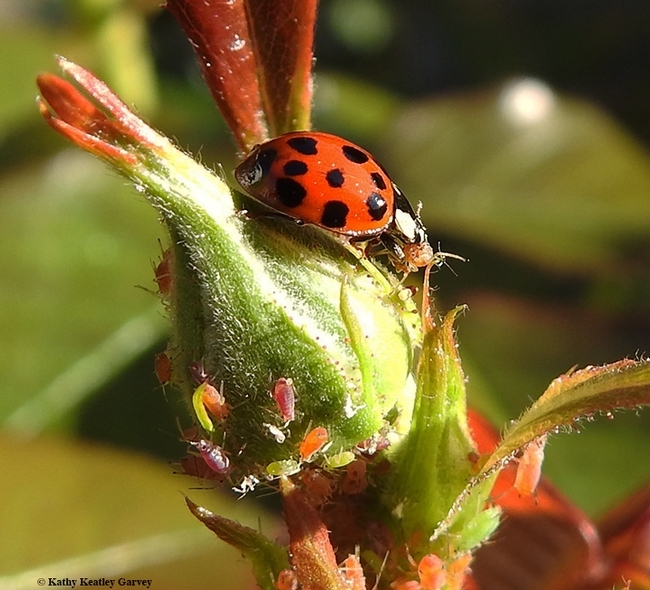
A lady beetle (aka ladybug) is a beneficial insect in the garden. It eats aphids and other soft-scale insects. (Photo by Kathy Keatley Garvey)
Yes, You Do Eat Insects!
Yes, you do eat insects! Maybe not deliberately, as in those who engage in entomophagy, the technical term for eating insects. Think of chocolate chirp cookies! Think of cricket flour! Think of making a meal out of mealworms. For thousands of years,...
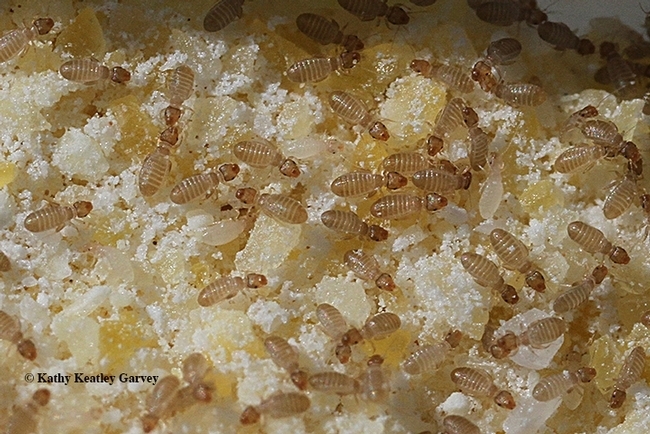
Booklice, Liposcelis bostrychophila, in cornmeal. This image was taken with a Canon MPE-65mm lens. The bugs are five times their life size. (Photo by Kathy Keatley Garvey)
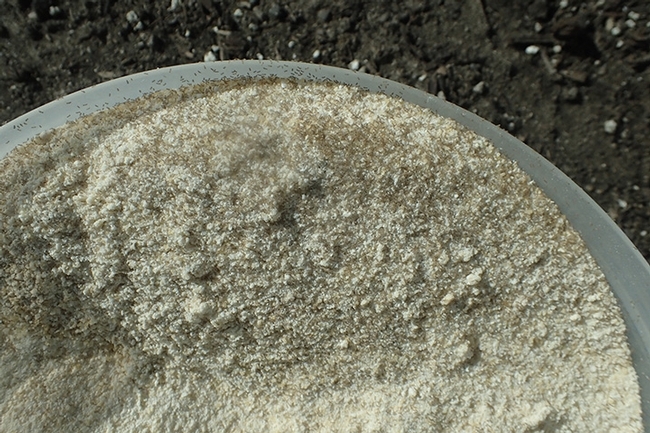
This is what you really see with the naked eye: the booklice are nearly microscopic. (Photo by Kathy Keatley Garvey)

